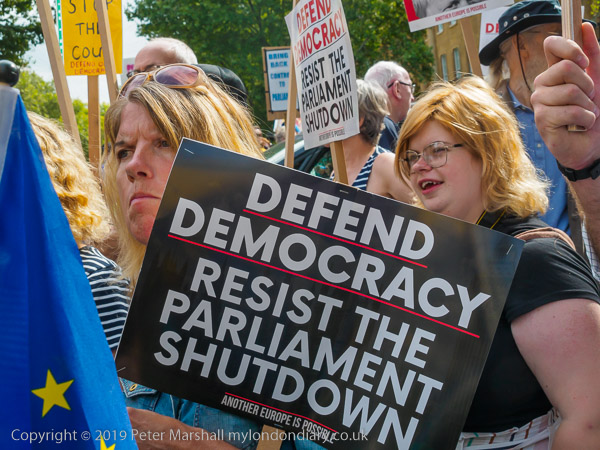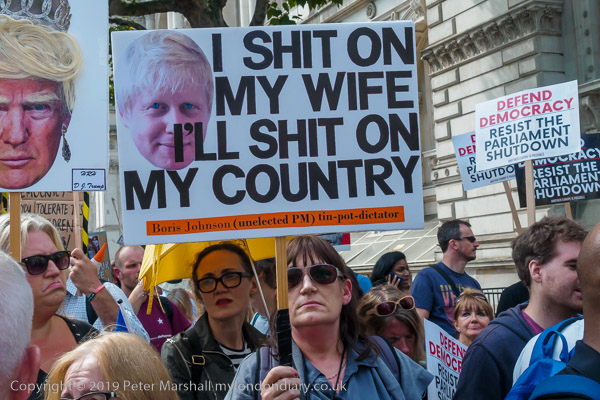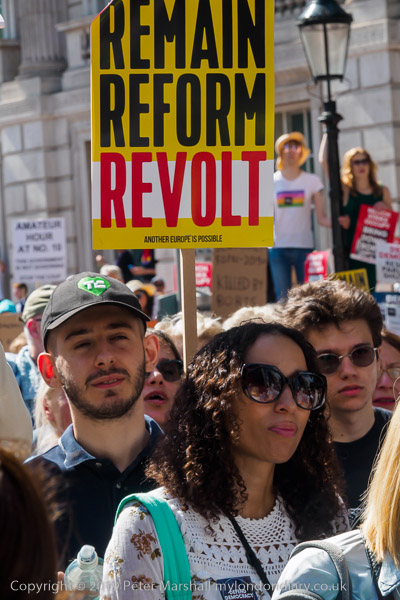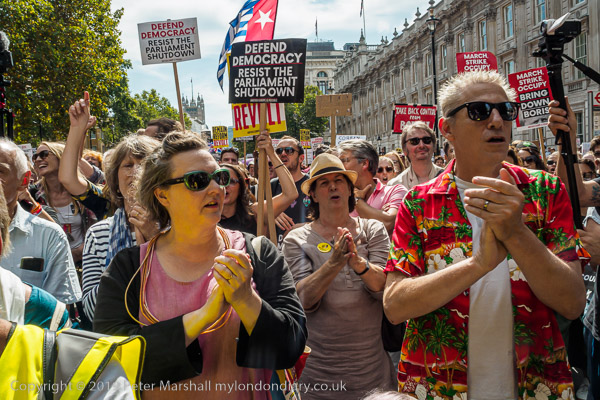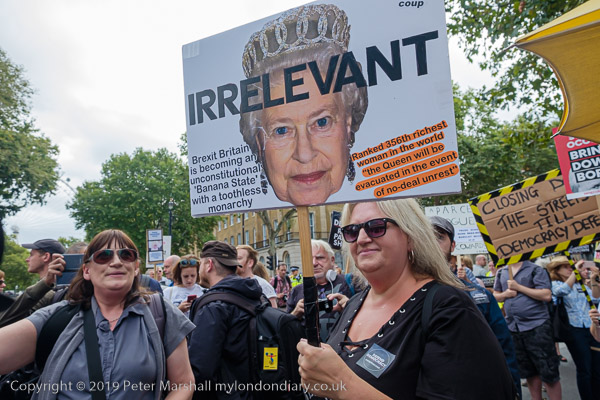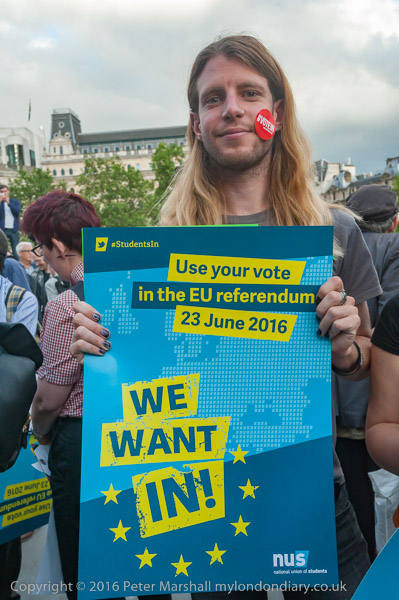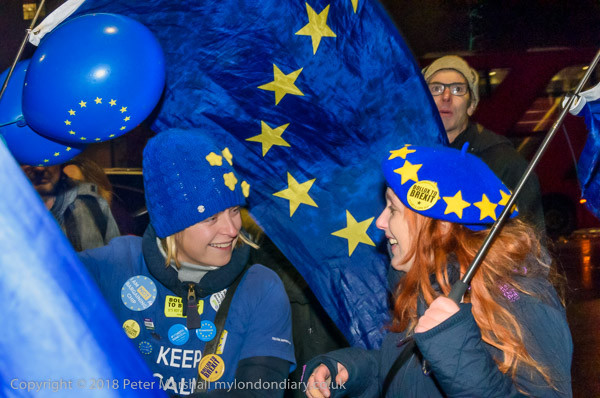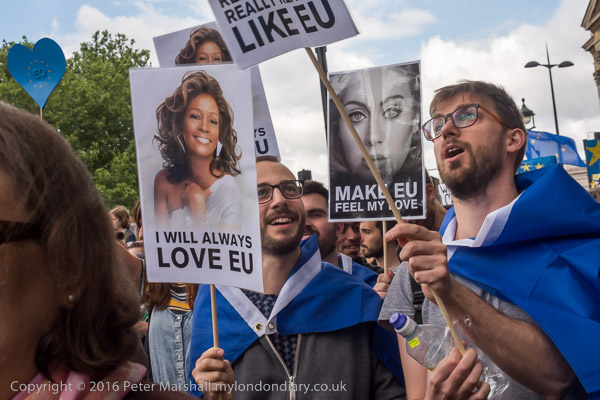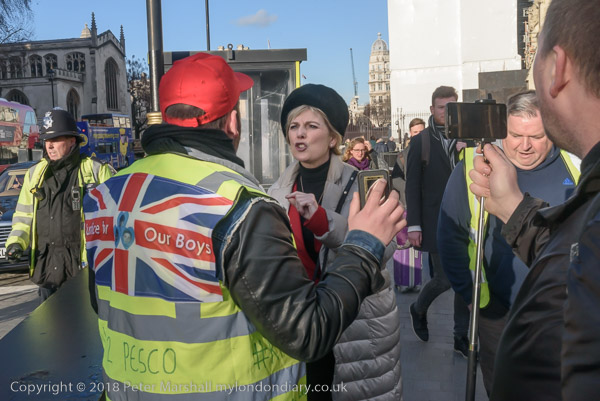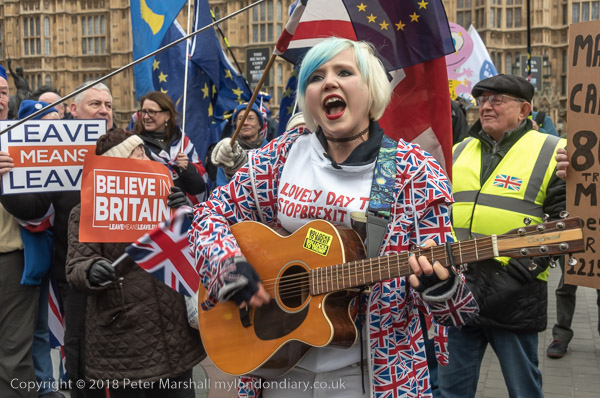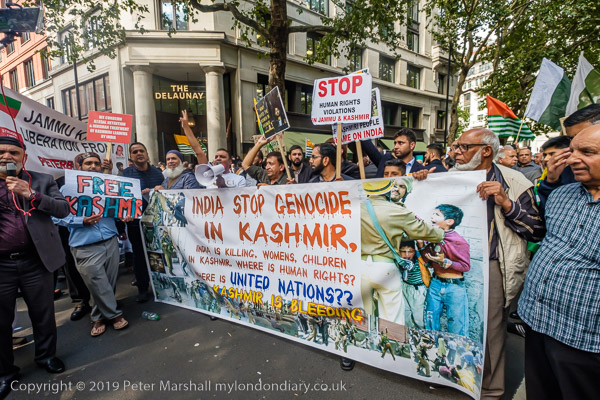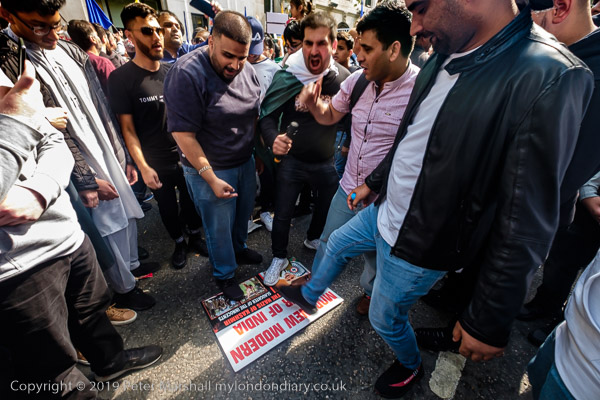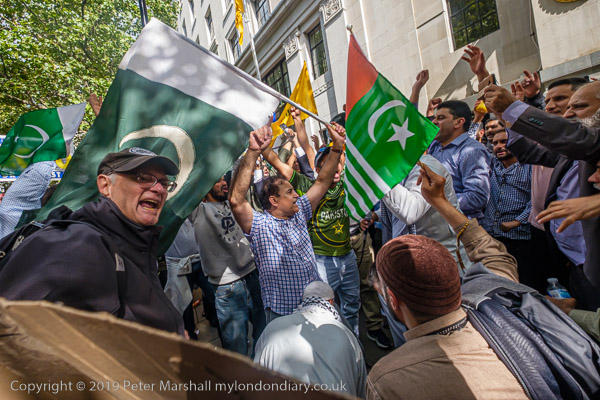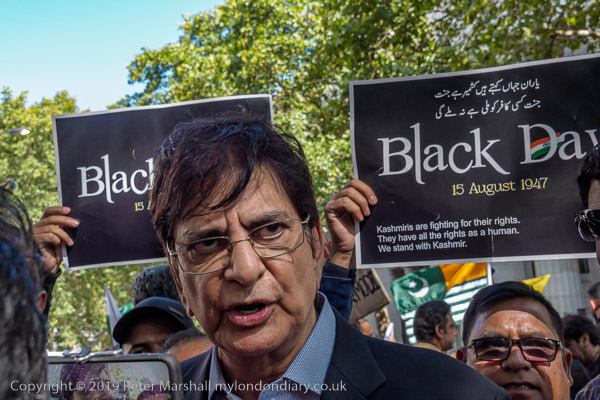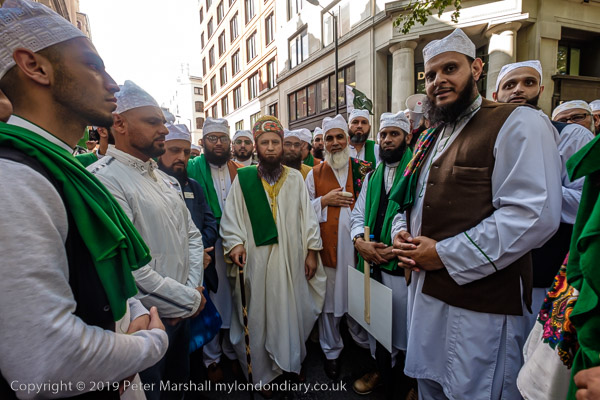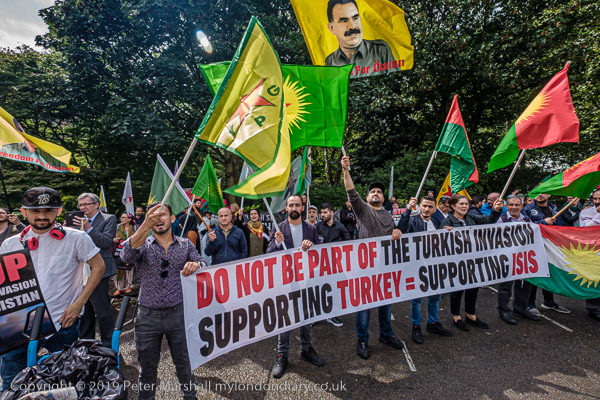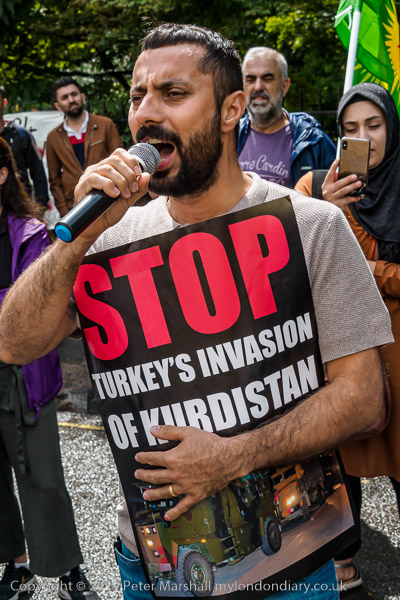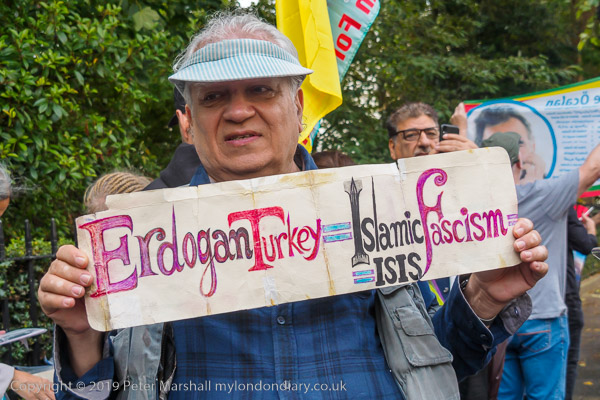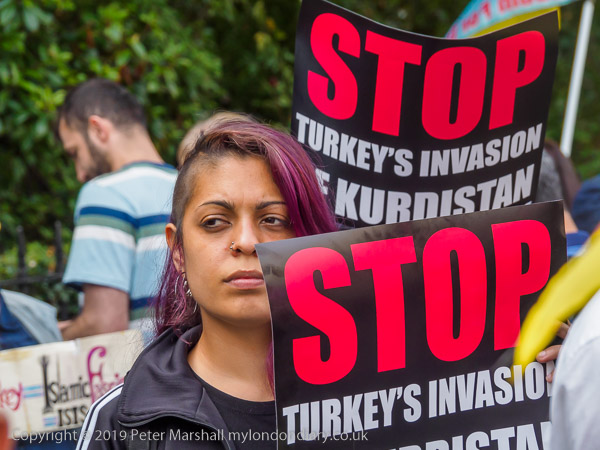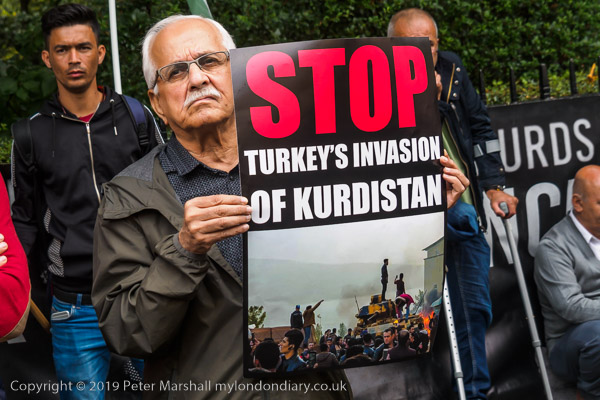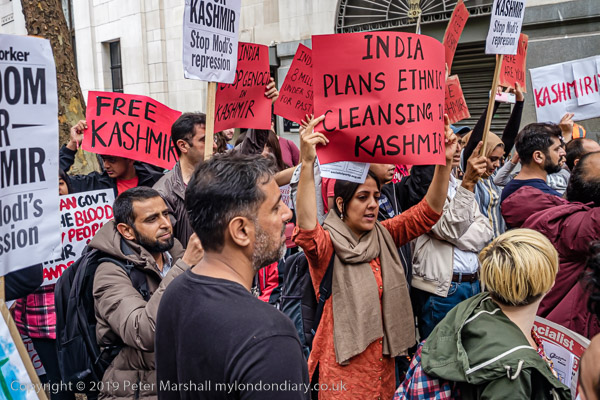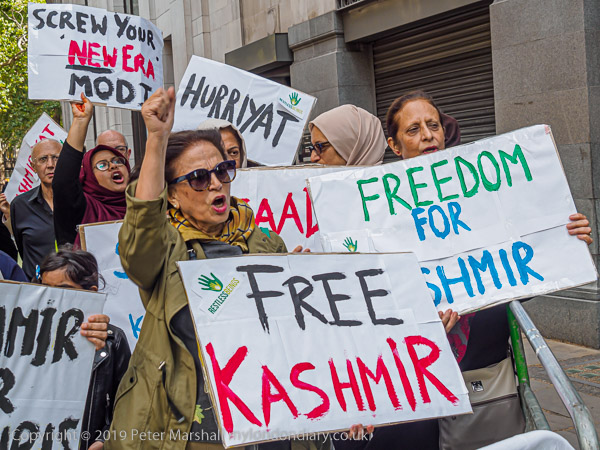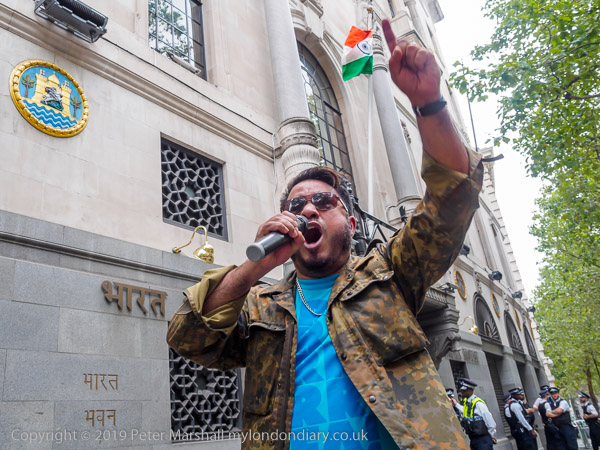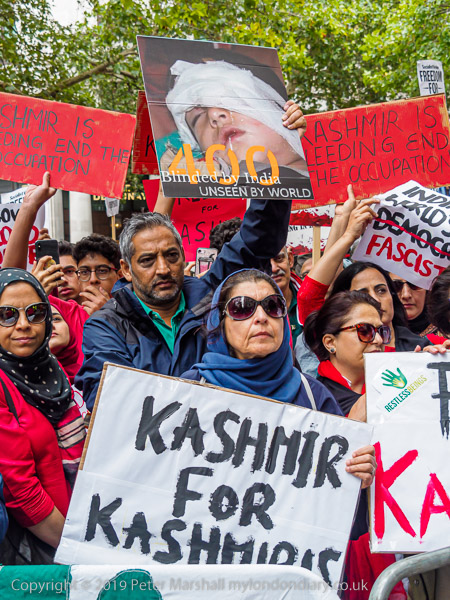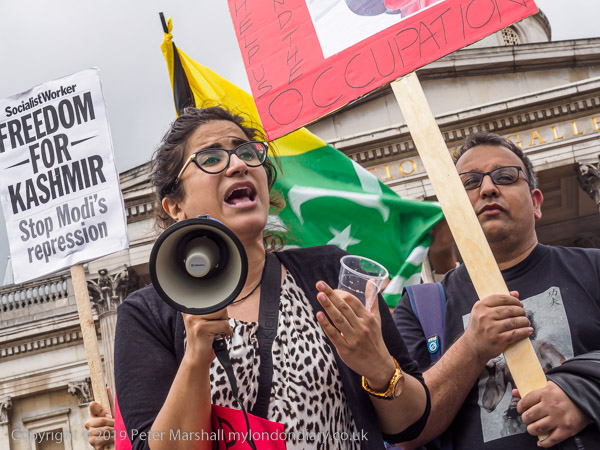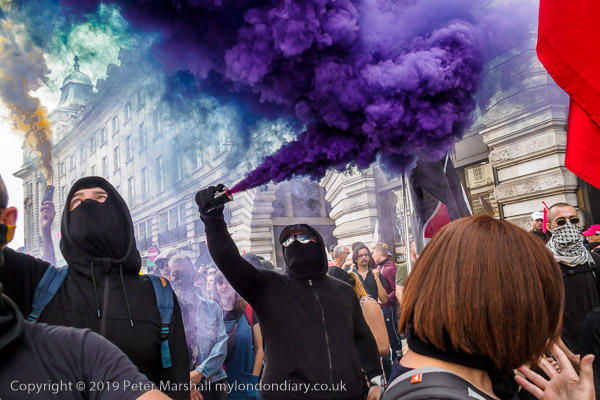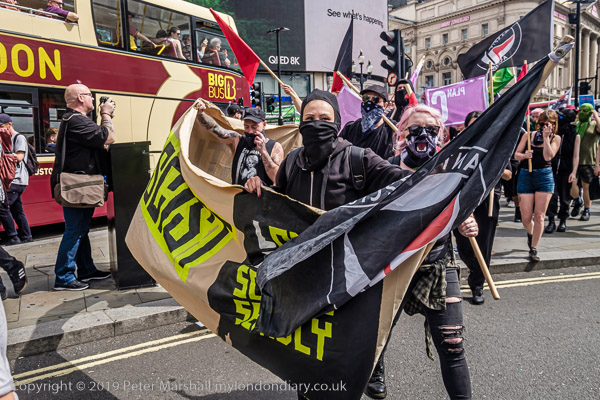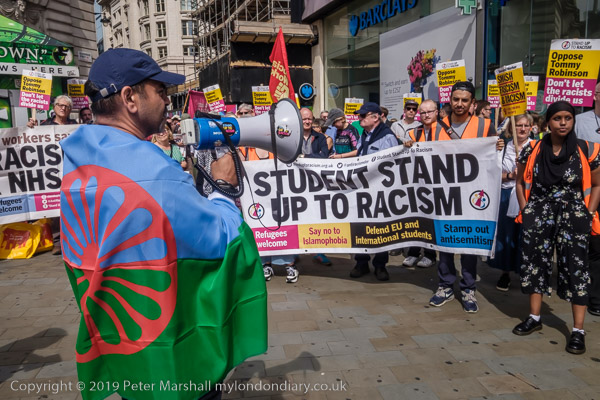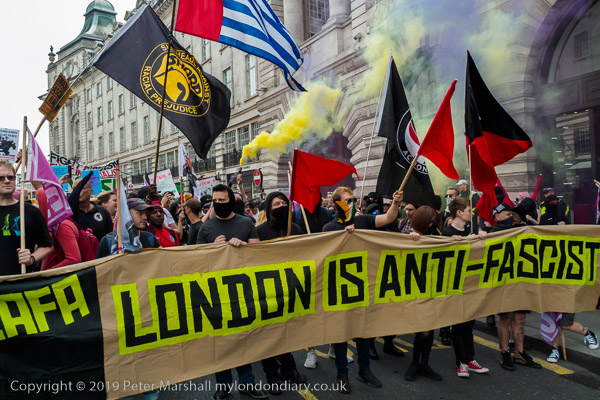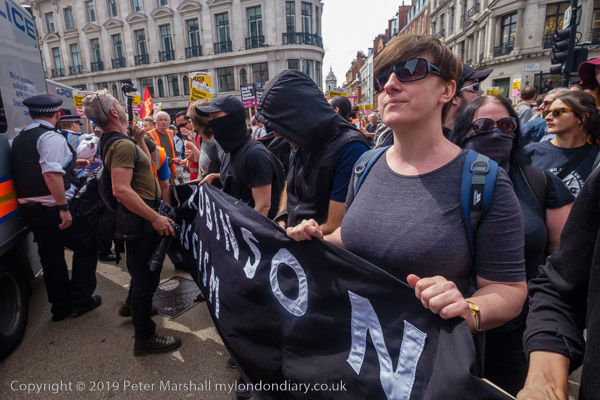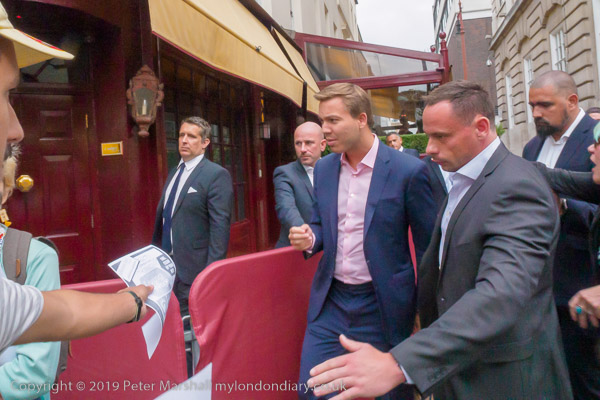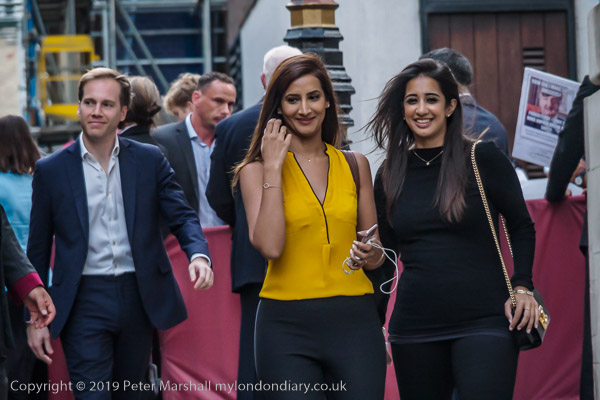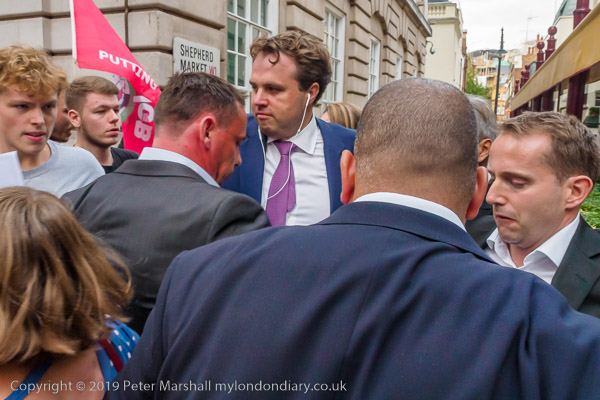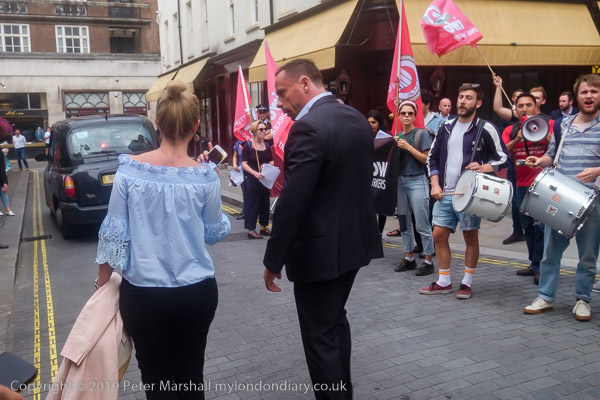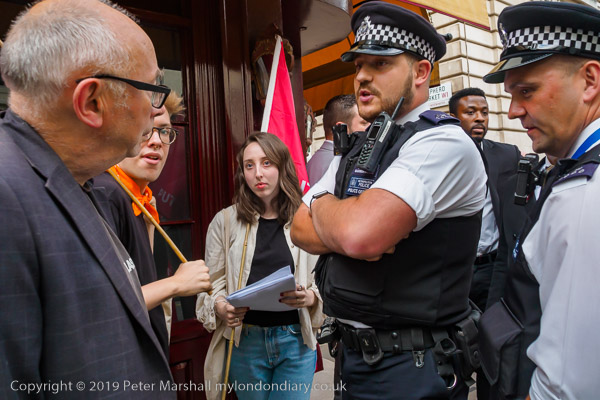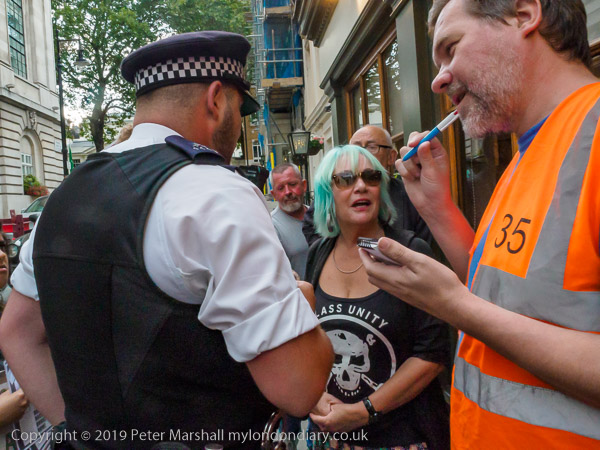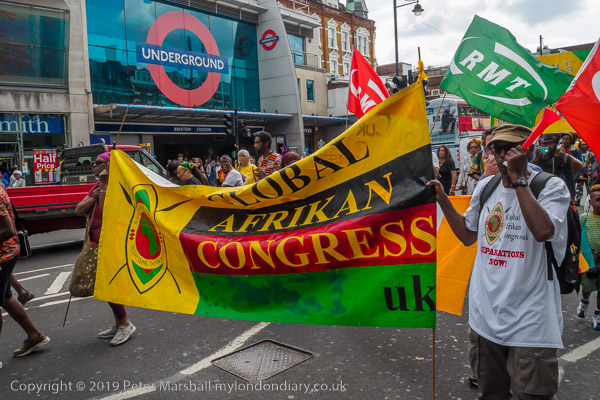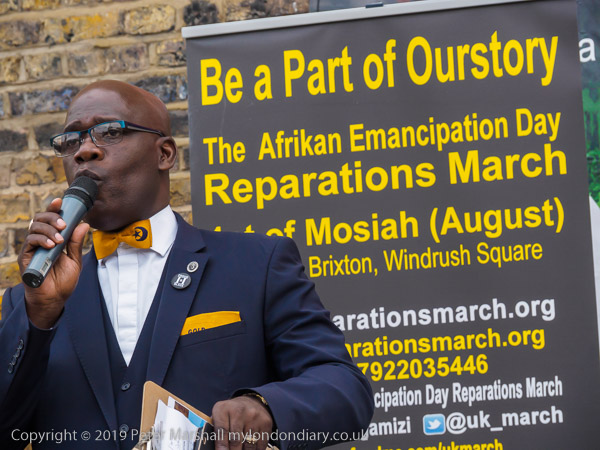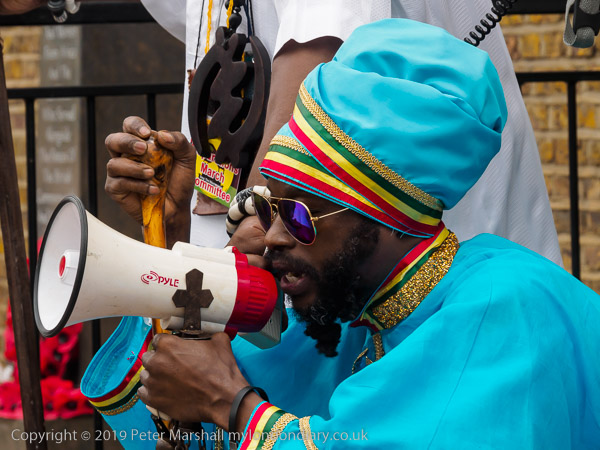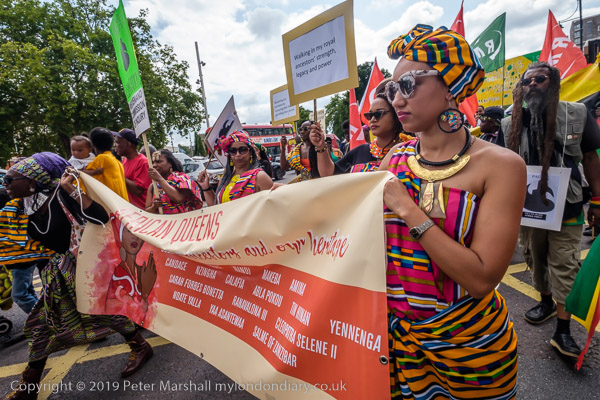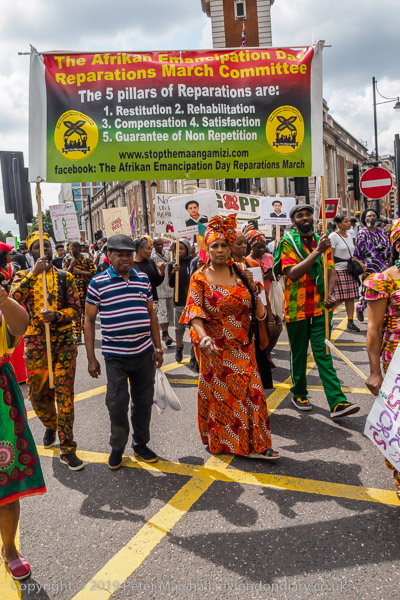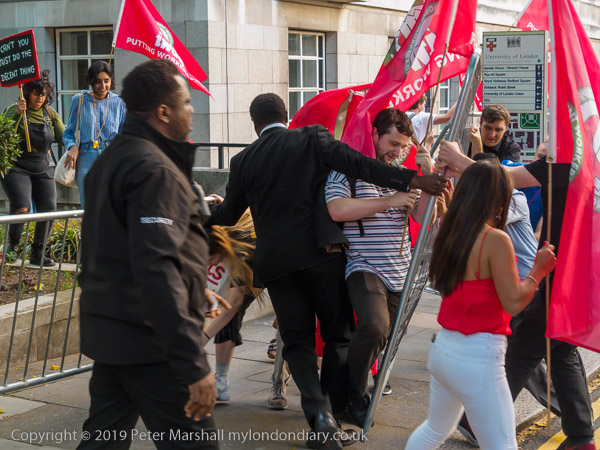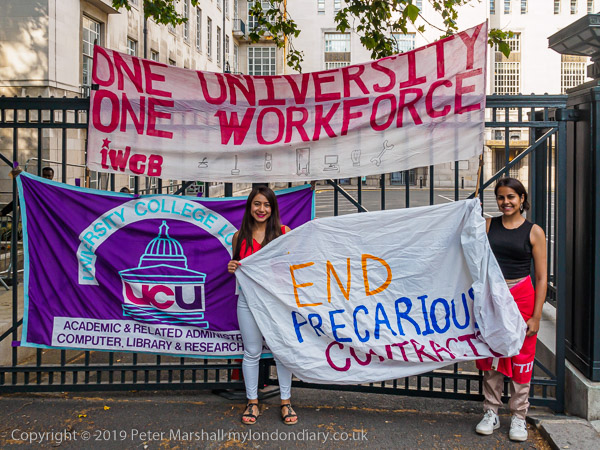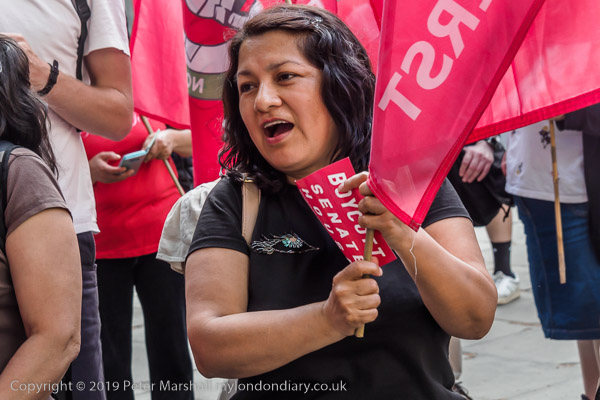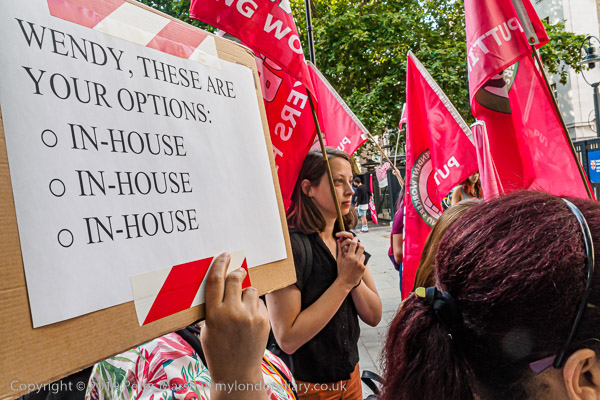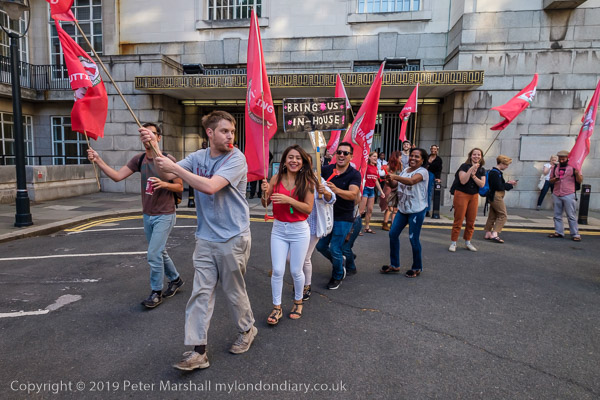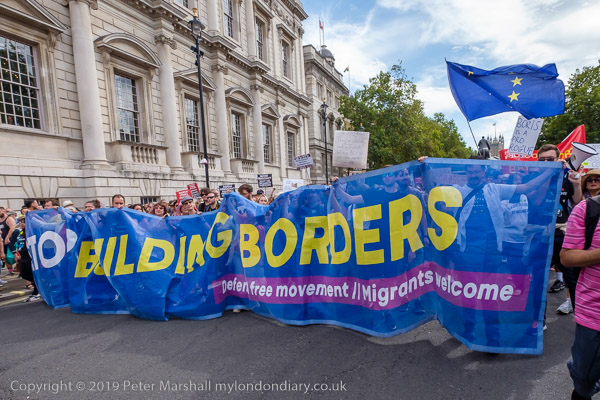
After a lengthy rally in a packed Whitehall, so full that police asked the organisers to tell people at the end only to move out in the direction of Trafalgar Square to avoid the danger of people being crushed as the Parliament Street end was so packed, Youth Strike for Climate and other mainly young protesters decided it was time for some more direct action.
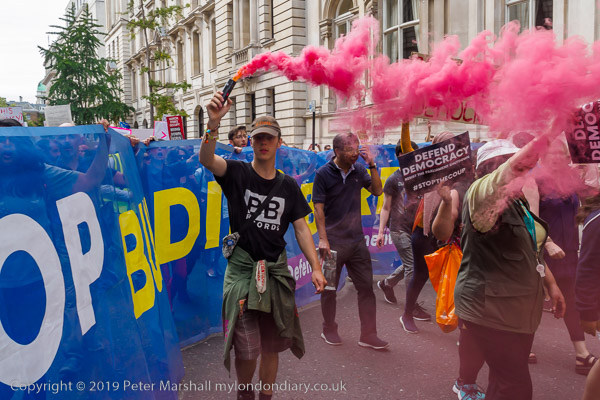
It had been a long rally, with speaker after speaker, and the crowd in front of the stage was so packed that I was unable to move through it as I usually do during the more tedious of the speeches. There were some good speeches, and some well-known speakers, but I now find standing in one place for a long time makes my legs start to itch and throb, inflaming my varicose eczema.
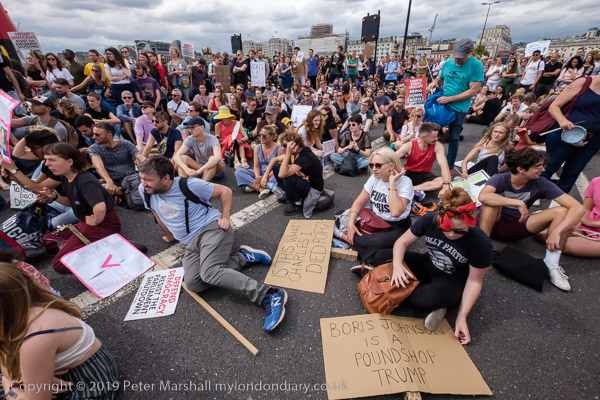
So when the Youth Strike moved off, I was more than happy to follow them, though I did hope they would not move too far. There were other groups that marched as well as those I was with, some going into the West End, but fortunately these marchers went to a rather more convenient place for my journey home.
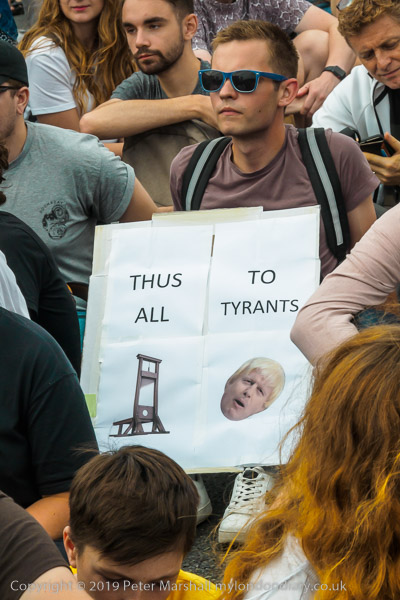
As they marched up Whitehall, police appeared to be forming a cordon across the top of the street, and they turned right down Whitehall Place, then continuing up Craven Street to The Strand. Police made no further effort to stop them, with just a few officers marching with them as they made their way onto Waterloo Bridge and sat down, blocking the south-bound carriageway.
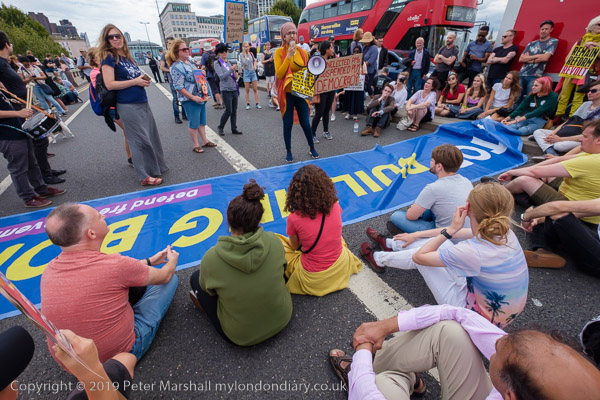
They began their own rally there, and there were several short speeches, but the lure of Waterloo Station just a short distance further on soon proved too great, and I left to go home. As I walked off the bridge, several vans full of police arrived and were doubtless about to attempt to re-open the bridge to traffic, but I’d had enough.
More pictures Students March to Defend Democracy.
All photographs on this and my other sites, unless otherwise stated, are taken by and copyright of Peter Marshall, and are available for reproduction or can be bought as prints.
There are no adverts on this site and it receives no sponsorship, and I like to keep it that way. But it does take a considerable amount of my time and thought, and if you enjoy reading it, please share on social media.
And small donations via Paypal – perhaps the cost of a beer – would be appreciated.
